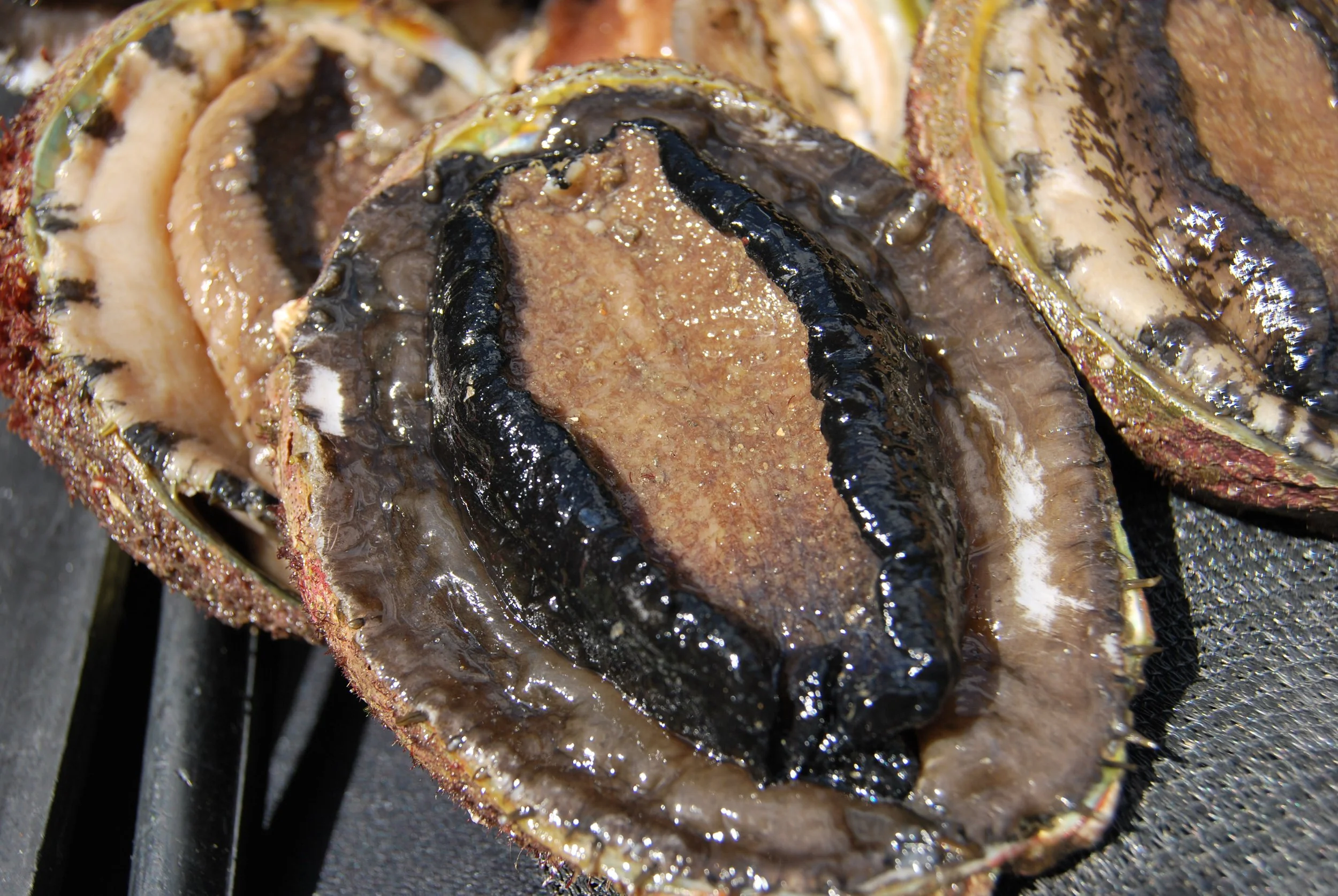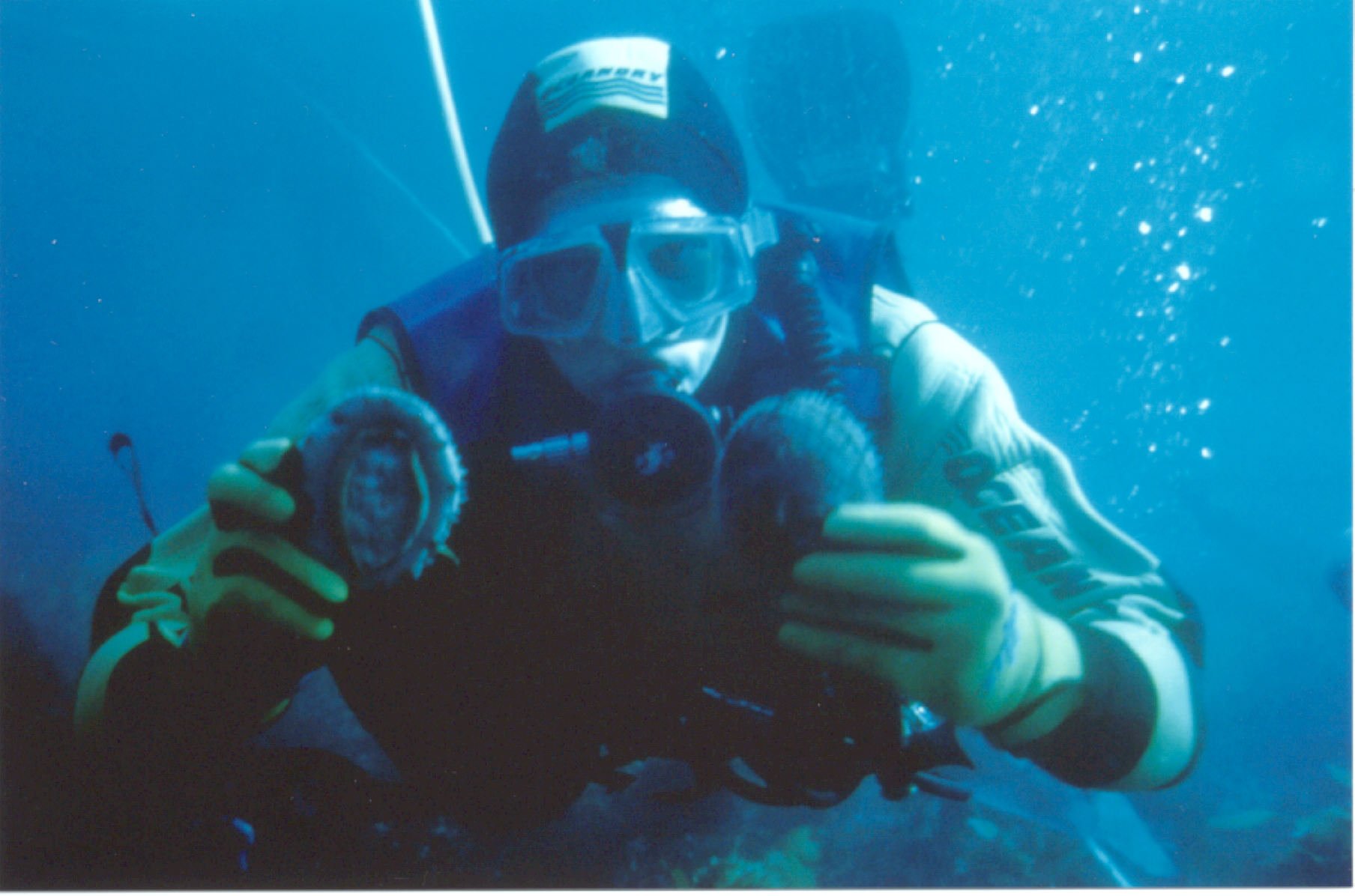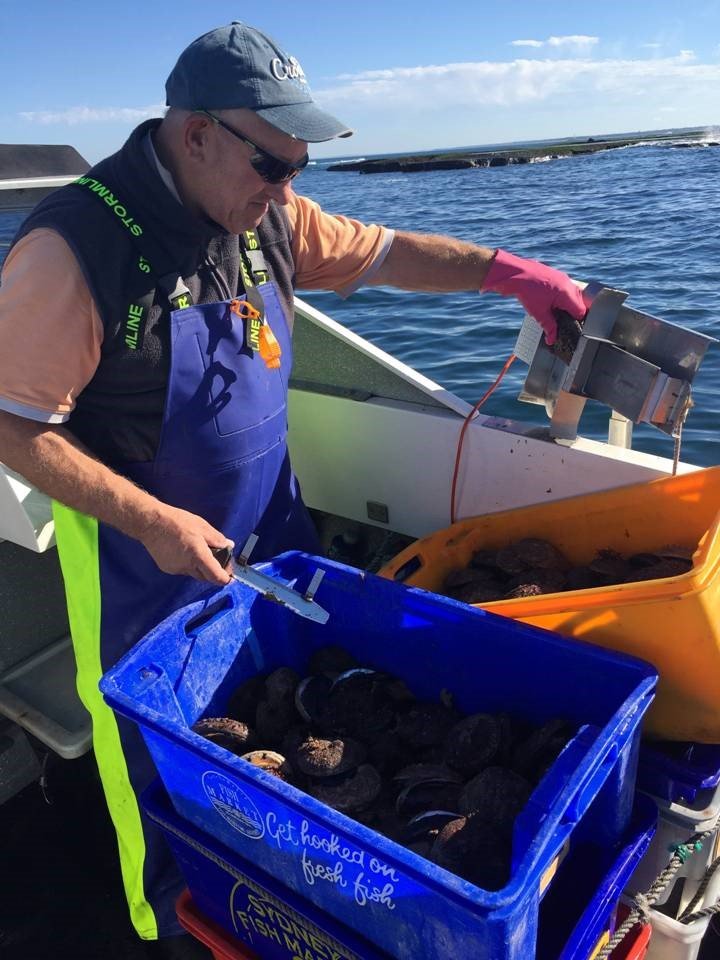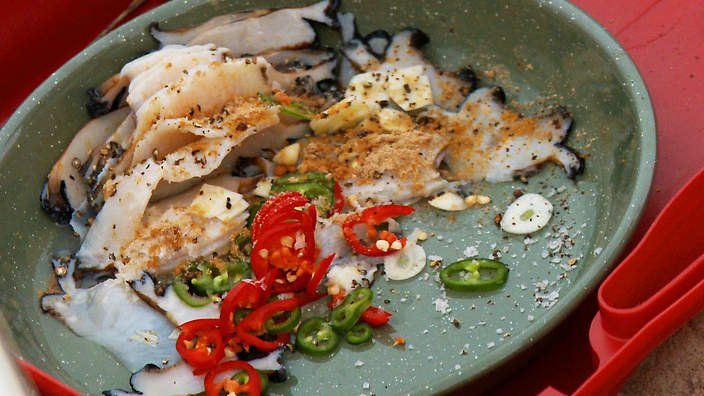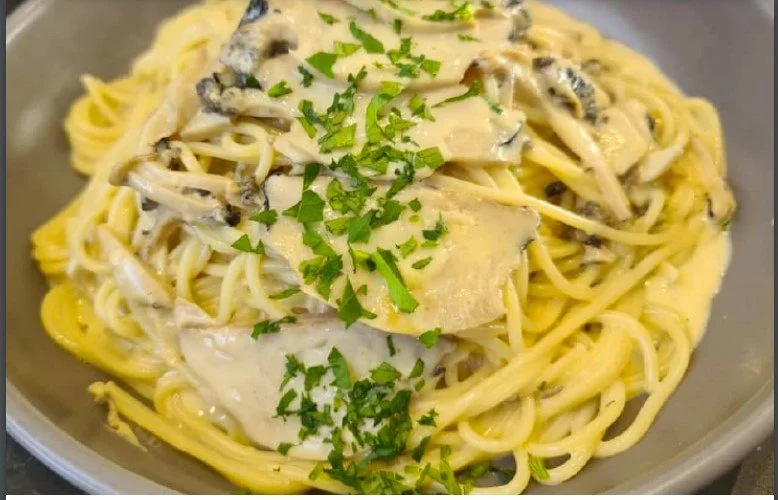MOLLUSCAN SHELLFISH
Abalone
Did you know that abalone is a highly prized delicacy and aphrodisiac in the Far East? It is rich, flavourful, and among the world's most expensive seafood.
Abalone are a type of single-shelled (gastropod) herbivorous marine mollusc. There are approximately 55 different species of abalone throughout the world. Their body is large and fleshy, with a broad, muscular foot that is used to attach itself to reefs or rocks using suction. Abalone prefer rocky reefs exposed to wave action and are found from the shore out into the sea to depths of 30 metres.
The shells of abalone species are rough, flat and ear-shaped, which protects them from wave action. Their shells are also smooth and shiny on the inside to protect the soft flesh of the abalone from potential damage. Rows of small holes run along the edge of their shells help to distinguish abalone species from other marine snails. Abalone expel water that have passed through their gills via these holes. As abalone grow in size, these holes progressively close-up, with usually only the last four or five holes remaining open when they reach full-size.
The majority of abalone species are found in cold, nutrient rich waters off the coasts of New Zealand, South Africa, North America, Japan and Australia. The Abalone Fishery is one of Victoria's most valuable commercial fisheries.
CATCH
Abalone Diver
Abalone has been fished worldwide for centuries as a source of food, whilst their shells have been used for decorative items such as jewellery.
In Victoria, a commercial fishery was established in the early 1960s to supply Asian markets and coincided with the introduction of SCUBA diving. Abalone divers use ‘hookah’ breathing equipment (a surface air compressor and air hose), carried by small boats to harvest Blacklip and Greenlip abalone off the Victorian coastline. Divers prise mature abalone from the reef using a chisel-shaped abalone ‘iron’.
The commercial wild-catch fishery is managed by Total Allowable Catches across three zones in the State.
The popularity and price of abalone worldwide has soared, causing this seafood delicacy to be overfished in many countries. The only abalone stocks that have not collapsed to date are in Australia and New Zealand. Victoria’s commercial abalone fishery benefits from a high demand and price for abalone in both domestic and international markets, particularly in Asia, because of its fresh, high-quality flavours and the care taken by divers when harvesting. Careful management of the fishery ensures that abalone is harvested at a sustainable level and the breeding stock is maintained at acceptable levels.
In Victoria, abalone are also farmed on land, or at sea in cages or racks suspended off the sea floor. Farms normally have a low impact on their surrounding environment as operations are normally small with low amounts of waste.
Abalone broodstock are sourced from the wild and farmed under controlled conditions in a hatchery. Planktonic larval stage abalone filter-feed on microalgae and then settle on hatchery plates, which mimic a reef structure. On these plates, a slimy film of microscopic diatoms is grown as a food source for the juvenile abalone.
Victorian abalone farmers have a proven track record of for supplying high-quality abalone, aided by the beautiful, but very cold waters off the Victorian coast
SEASON:
All year round
SHOP
Once back in at the wharf, the catch is weighed and sent off to abalone fish receivers for processing. Some fishers sell their catch direct to the public from their boat.
Abalone are fished all along Victoria's coast and landed at places like Portland, Warrnambool, Apollo Bay, Queenscliff, Mallacoota, and Lakes Entrance.
Abalone is always available at the San Remo, Apollo Bay, and Lakes Entrance Fishermen's Co-ops with limited sales direct from fishing boats in season. They are readily available through Melbourne's excellent metropolitan markets, fishmongers, and seafood suppliers.
COOK
Whether it is wild or farmed, abalone, needs to be cleaned and tenderised before cooking.
Rinse the abalone under cold water to remove any loose pieces of shell or seaweed. Locate the shallow, narrow end of the shell and slide a thin metal spoon between the shell and the foot of the abalone. When the spoon is approximately halfway under the foot, push down on the handle of the spoon to dislodge the abalone.
Some people use a meat tenderiser, but you may have success gently tapping all over the abalone slice with the back of a large spoon as this approach tenderises the meat without tearing it. Pound the slice until tender. Remember to check the abalone's texture every once in a while.
One of the easiest ways to cook abalone is to fry them in a little butter for two minutes on each side, or the traditional California method of shucking and breading them, then pounding, slicing, sautéeing and finishing with a final squeeze of lemon.
Fresh abalone should be stored in the fridge for up to 48 hours maximum before it is cooked or frozen.
PANTRY PARTNERS
Butter, olive oil, garlic, ginger, soy sauce, lemon, chilli
Abalone with chili and garlic. Recipe by Nick Haddow, SBS Food

